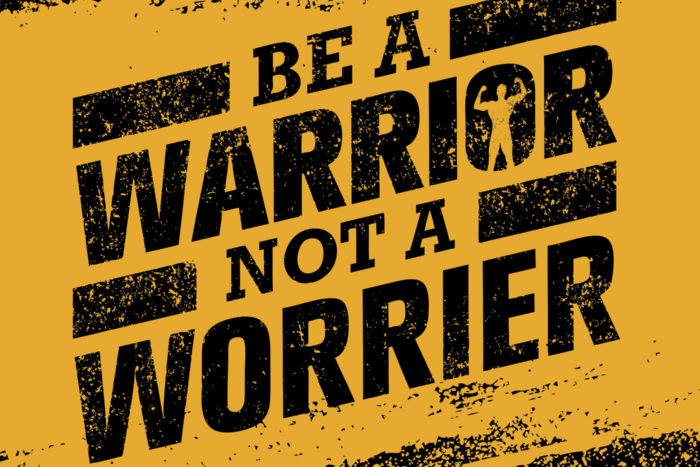We Need Warriors not Worriers!
Some people stress out and stay put. Others face their fears and move forward. Some people fear the unknown and hold others back. Other people embrace uncertainty and lead others through it. One person is a Worrier. The other person is a Warrior.
Warriors or Worriers
In today’s world, timid leaders are all too common. I see it over and over again when I am working with corporations, non-profits, and even law enforcement. In each of the areas, too many leaders lack the Moral Courage to act.
Moral Courage is needed:
- When someone needs to confront a difficult employee.
- When someone needs to tell the boss she is wrong.
- When someone needs to inform a customer their timeline is unrealistic.
Unfortunately, instead of stepping up and speaking up, that person gets consumed by worry. They wring their hands and wonder:
- What if this employee makes the conversation difficult?
- What if my boss thinks I am a negative influence on the team?
- What if our customer walks away from the deal?
Are these scenarios possible? Yes!
The difference is a Warrior sees these negative scenarios as possible. While the Worrier sees the same scenarios as probable.
The Possible Versus The Probable
When a Warrior recognizes these as possibilities, she dwells on solutions, creates strategies, and gets to work.
When a Worrier sees these as probabilities, he dwells on the negative outcomes, formulates excuses, and waits to see what happens.
Courage
The definition of Courage in twelve words or less so a 12 year old can understand:
Acting despite perceived or actual risk.
Worriers tend to spend more time focused on perceived risks than they spend on finding solutions. The amount of time and energy expended on the “What if’s…” that consume a Worrier is far greater than the time and energy a Warrior expends on facing those fears and developing solutions.
There Is No Secret To Becoming a Warrior
Warriors do not take a special pill or drink a magic potion that allows them to exercise Moral Courage. They just have a lot more practice at facing their fears than Worriers do.
Warriors face their fears instead of avoiding them.
The Bottom Line:
The only way a Worrier becomes a Warrior is by facing his fears. Courage takes practice. It is a Habit of Character.
The more you choose to act despite the perceived or actual risks you face, the more likely you are to make that choice again.
It is not easy to turn and face your fears head on, if you are not in the habit of doing it. But each time you make that choice, I guarantee you it will make it easier to make that same choice again.
Soon the people you work with will see you displaying the Moral Courage of a Warrior. And perhaps more importantly, the people you live with will see you practicing the Moral Courage of a Warrior at home as well.
Whether we are a Warrior or a Worrier, our choices influence the choices of the people with whom we spend the most time.
The question is who do you want them to become as a result of your influence?
Question:
How do you want the people at work or at home to see you? As a Warrior or a Worrier?
Dave Anderson is coauthor of the Amazon Best-Seller Becoming a Leader of Character – Six Habits that Make or Break a Leader at Work and at Home with his father General James L. Anderson (USA Retired).
You can order Becoming a Leader of Character on Amazon by clicking here:
You can also find Becoming a Leader of Character at Barnes and Noble, Books-a-Million and other retailers.


Thanks for the reminders regarding courage! Love the comparison between warriors and worriers. So true! You have a way with words. Thanks for inspiring!
Thank you Dominic! I try not to be too verbose yet also be clear. I appreciate the encouragement.